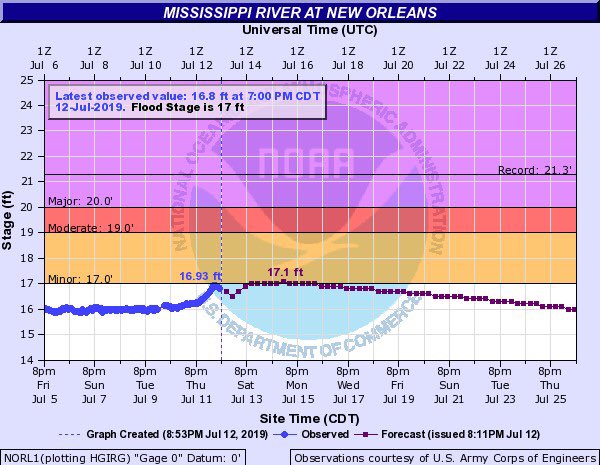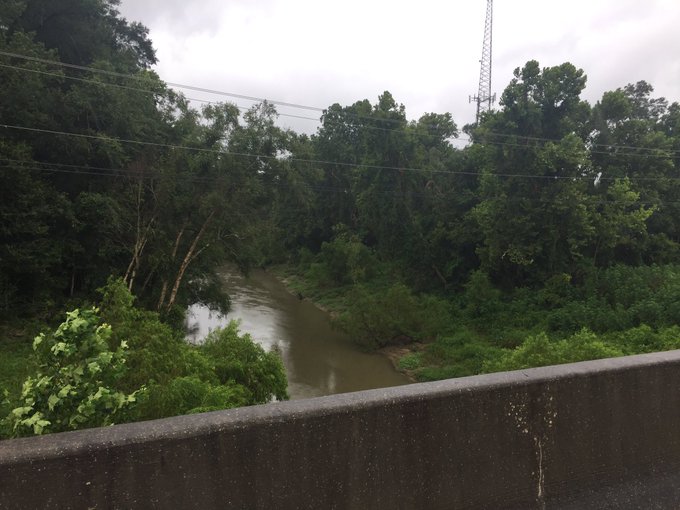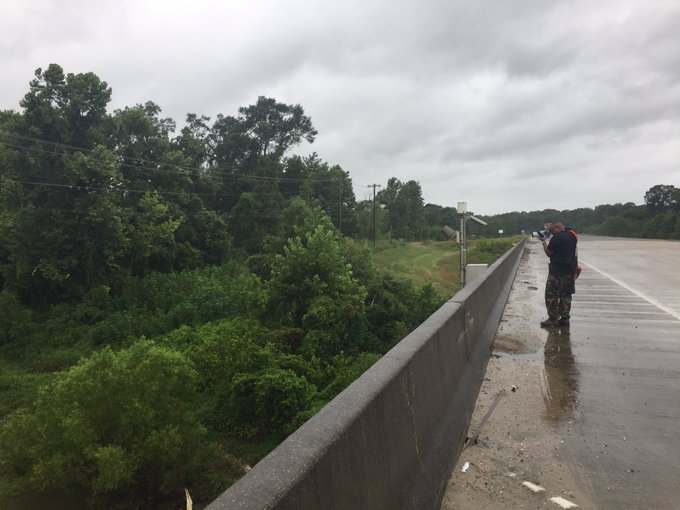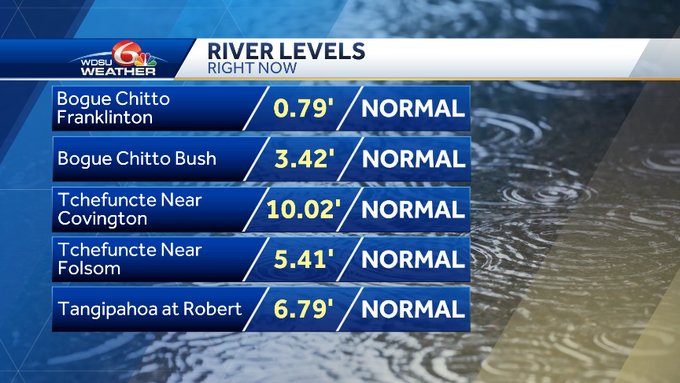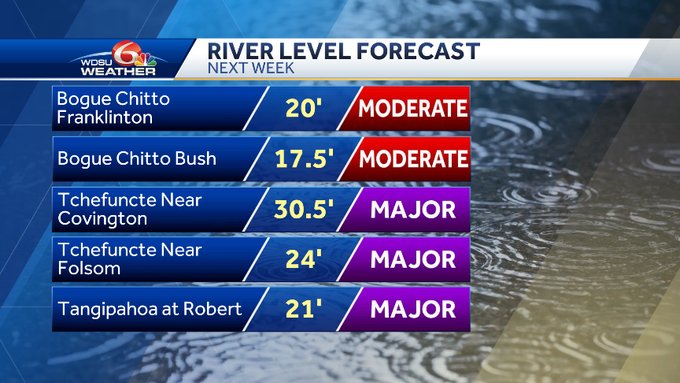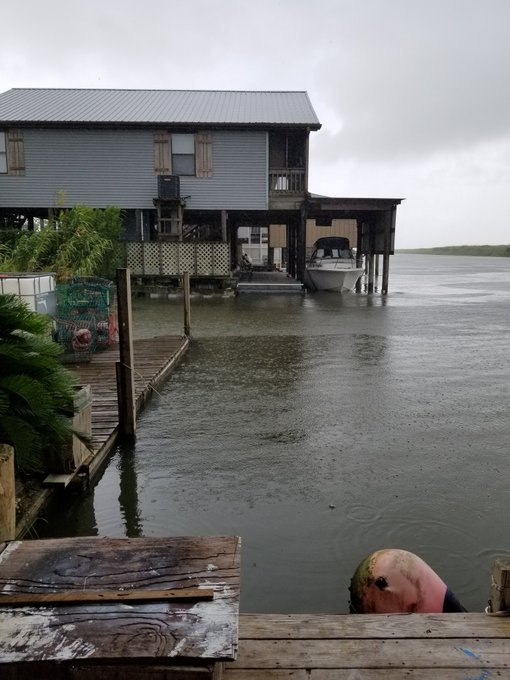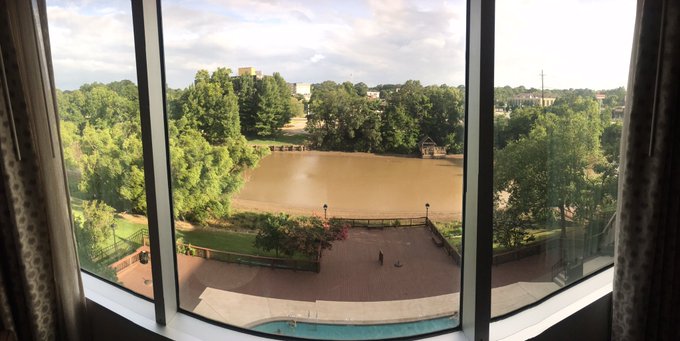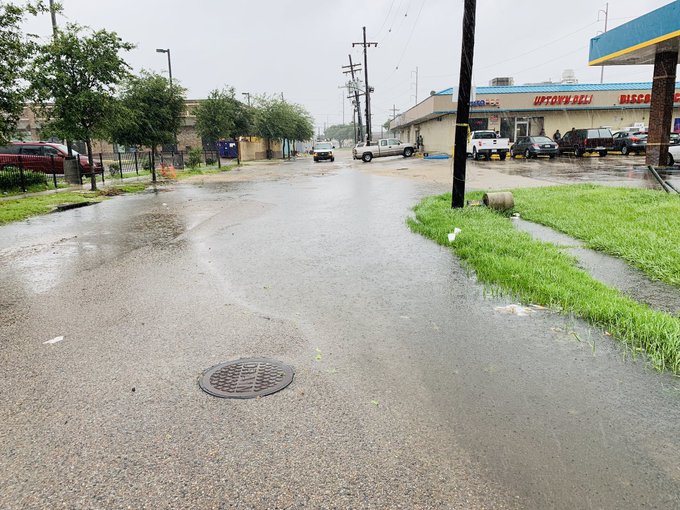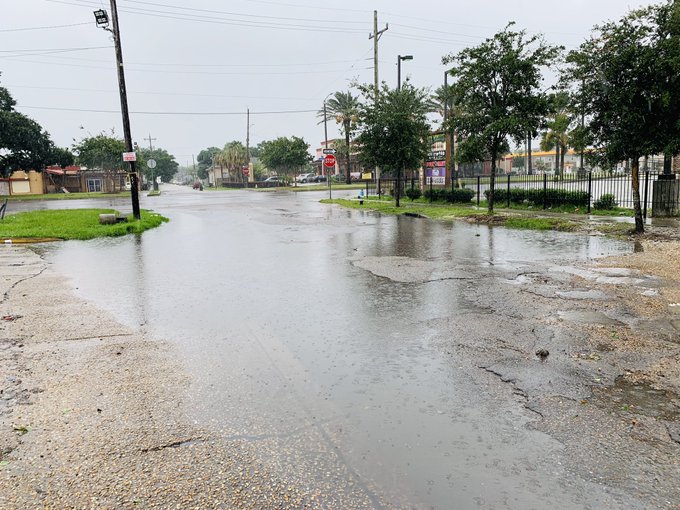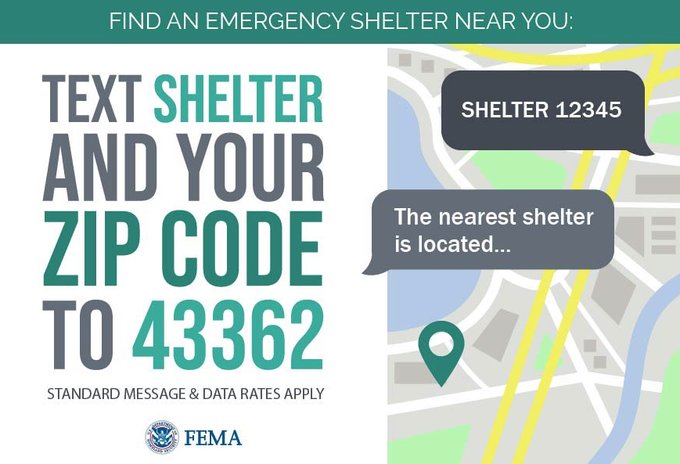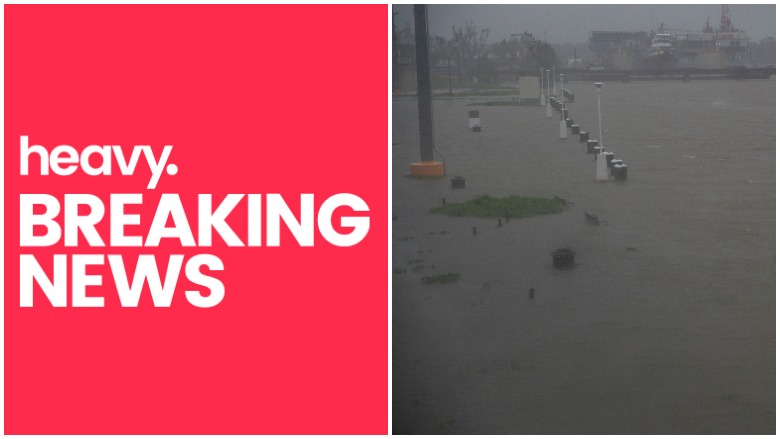
Getty Benches and walkways are flooded by water along the Berwick River in Morgan City, Louisiana ahead of Tropical Storm Barry Saturday, July 13,2019. - Tropical Storm Barry is the first tropical storm system of 2019 to make landfall in the United States the storm is around 10 miles offshore from Louisiana. Barry will dump up to two feet of rain along with strong winds and storm-surge flooding according to weather reports.
The National Weather Service said Saturday morning that Tropical Storm Barry was now Hurricane Barry, a category 1 storm, heading toward land. But when it arrived early Saturday afternoon, near Intracoastal City, it was quickly downgraded to Tropical Storm status again, with 65 MPH sustained winds and expected 85 MPH gusts. Barry is expected to bring far more rain than wind. Forecasters say two or more feet of rain is expected and rain will fall where flooding has previously been an issue, the NWS says. Inland flooding was a big concern.
Saturday the National Hurricane Center said it expects storm surge inundation along the coast of southern and Southeastern Louisiana, portions of Lake Pontchartrain, and portions of coastal Mississippi where a storm surge warning is in effect. Water levels have already begun to rise in these areas, the NHC said in its 10 a.m. forecast update, “with peak inundation expected to occur later today. The highest storm surge inundation is expected between Intracoastal City and Shell Beach. And flooding reports were coming in from several areas.
As of Friday evening, some four million people are under a tropical alert. The Weather Channel reported “disastrous” flooding is possible, per the National Hurricane Center’s alerts. New Orleans called for voluntary evacuations for people who live in areas outside the levees, asked residents to be indoors by 8 p.m., and shelter in place as the city suspended public transit.
The Mississippi River is expected to crest at 17 feet in New Orleans on Saturday, though “levees protect up to 20 feet.”
Saturday morning, the US Army Corps of Engineers said, “Storm Surge Warning continues for Intracoastal City to Biloxi, and Lake Pontchartrain. Life-threatening inundation from rising water moving inland during the next 36 hours in indicated locations.”
Still, the flood gates along the Big Mud were closed.
At its 7 p.m. update, the NWS said Barry will bring a storm surge of up to six feet and 10 to 20 inches of rain.
There’s widespread concern about inland flooding and the surge of water that is the most serious. Storm surge is produced by water being pushed toward the shore by the force of the winds moving cyclonically around the storm. The impact on surge of the low pressure associated with intense storms is minimal in comparison to the water being forced toward the shore by the wind.
The surge is caused by slow-moving Barry churning over the hot-water Gulf, where temperatures range in the high 80s and low 90s.
Here’s what you need to know:
Flooding From Rain & Storm Surge is the Greatest Threat to Life & Property in a Hurricane, NOAA Says
According to the National Oceanic and Atmospheric Administration, along the coast, storm surge and flooding is often the greatest threat to life and property from a hurricane.
NOAA says that “large death tolls have resulted from the rise of the ocean associated with many of the major hurricanes that have made landfall” with Hurricane Katrina in 2005 a prime example “of the damage and devastation that can be caused by surge” and flooding.
More than 1,500 people died during Katrina and, NOAA says, “many of those deaths occurred directly, or indirectly, as a result of storm surge” and subsequent flooding.
“I know #Barry is late to the party, but 1 of the biggest concerns in Baton Rouge will continue to be Comite River (which @mikedunlapphoto & I just visited). It’s forecast to crest early next week above 34 ft, which could mean big time flooding for Central, Greenwell Springs, etc.”
“Storm surge in Mandeville has advanced visibly in the few minutes I’ve been here.”
“Some crests will rival historic crests from 2016.”
Some wild video of two dogs’ reaction to flooding and what comes with it sometimes, like a displaced baby gator.
“We’ve told you about the possibility of interaction with animals during a flood event. Watch what happened to a family in Livingston Parish! (No animals were harmed while this video was recorded)”
But seriously, flooding is a major concern.
And appears to be widespread.
Friday Evening, Many Hours Before Landfall, Waters Were Already Rising & Storm Surge Evident & By Late Night, Conditions Were Worsening & Saturday Morning, Waters Were Rising
At just after 6 p.m. Friday, many hours before the storm was expected to make landfall, the water it’s bringing with it was already being felt.
“Is anyone remember that saying “good Lord willing and the Creek don’t rise”. well the Creek has risen. God-bless all those in South East and Gulf Louisiana God-bless us all. I love my family and my friends. 10 to 15″ of rain still to come and the storm surge will hit tomorrow.”
Also just after 6, this tweet about lake flooding, well in advance of the storm.
“FRIDAY 6:24pm — I’ll be tracking #TropicalStormBarry storm surge levels from my hotel window in Lafayette, Louisiana. Note the water levels!”
As NOAA has pointed out, it’s the storm surge and subsequent flooding from surge and rains, that is perhaps the greatest threat to life and property in a hurricane.
Not the best idea.
By 11 p.m., conditions were worsening.
“Situation is worsening on the southeast coast of Louisiana, storm surge quickly worsening as hurricane #Barry nears.”
It was reported that at around 10 p.m., “storm surge intensified rapidly in Golden Meadows, LA.This forced the closure of Hwy 1 which runs to Grand Isle cutting off everyone below Golden Meadow who chose to ignore the Mandatory Evacuation.”
In some locations, particularly extreme south Louisiana, evacuations were mandatory, Plaquemines Parish being among them. .
As the sun is about to rise, a view Saturday morning shows the steady and relentless surge.
The US Coast Guard Secured the Gulf Coast as Hurricane Barry Moved Inland & Had Begun Rescues
The Coast Guard says its Eighth Coast Guard District staff are “pre-staging assets in safe and nearby locations to prepare to respond after Tropical Storm Barry makes landfall.”
The CG closed the port of New Orleans.
Aircraft at stations in Houston, New Orleans and Mobile, Alabama are in place, its Shallow Water Response teams have deployed and pre-staged in Covington, Louisiana.
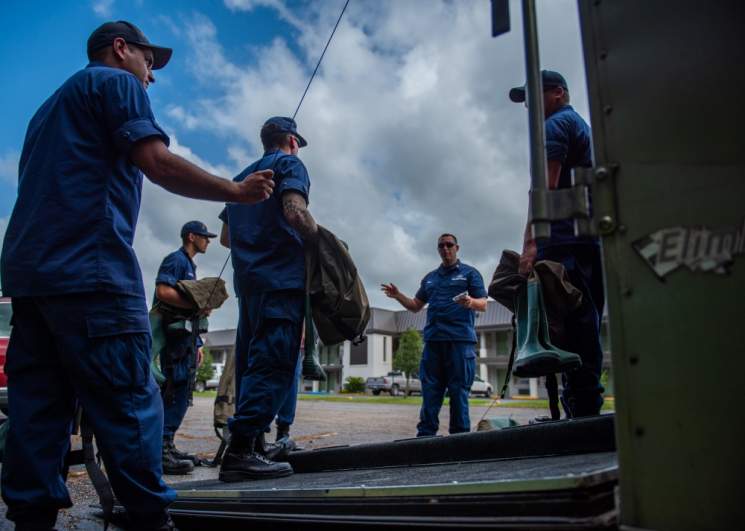
US Coast GuardA shallow water response team from Coast Guard Marine Safety Unit Paducah prepares flood response gear in Covington, Louisiana, July 12, 2019. The team traveled from Paducah, Kentucky, to respond to Tropical Storm Barry. (U.S. Coast Guard photo by Petty Officer 2nd Class Travis Magee/Released)
Another three teams have deployed and pre-staged in Shreveport. Its New Orleans-based mobile response teams are getting ready in Slidell, Louisiana and the Coast Guard has crews from Tactical Law Enforcement Team South and Marine Safety and Security Team Kings Bay on standby in Mobile. A Coast Guard Family Support Team has been established in Slidell to “facilitate lodging and needs of evacuated dependents.”
The Coast Guard says that given “hurricanes and tropical storms can be deadly’ its ability to do rescues “can be diminished or non-existent at the height of the storm,” so it advises people to “be prepared, stay informed, and heed storm warnings.”
This post will be updated.


